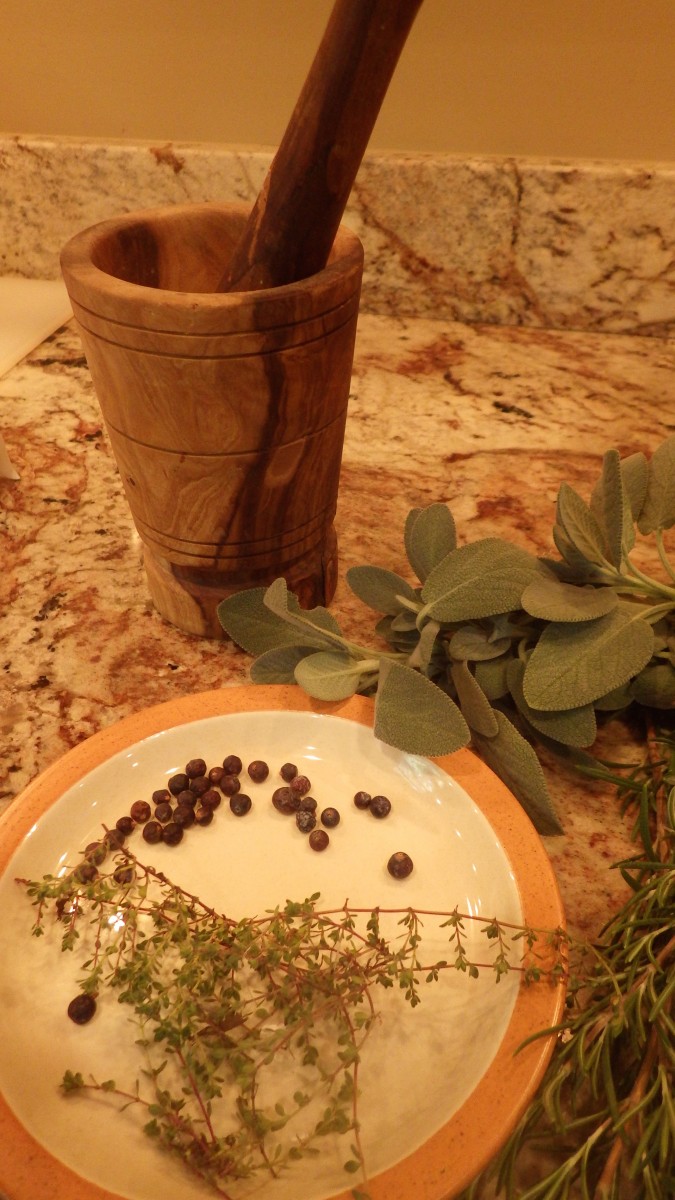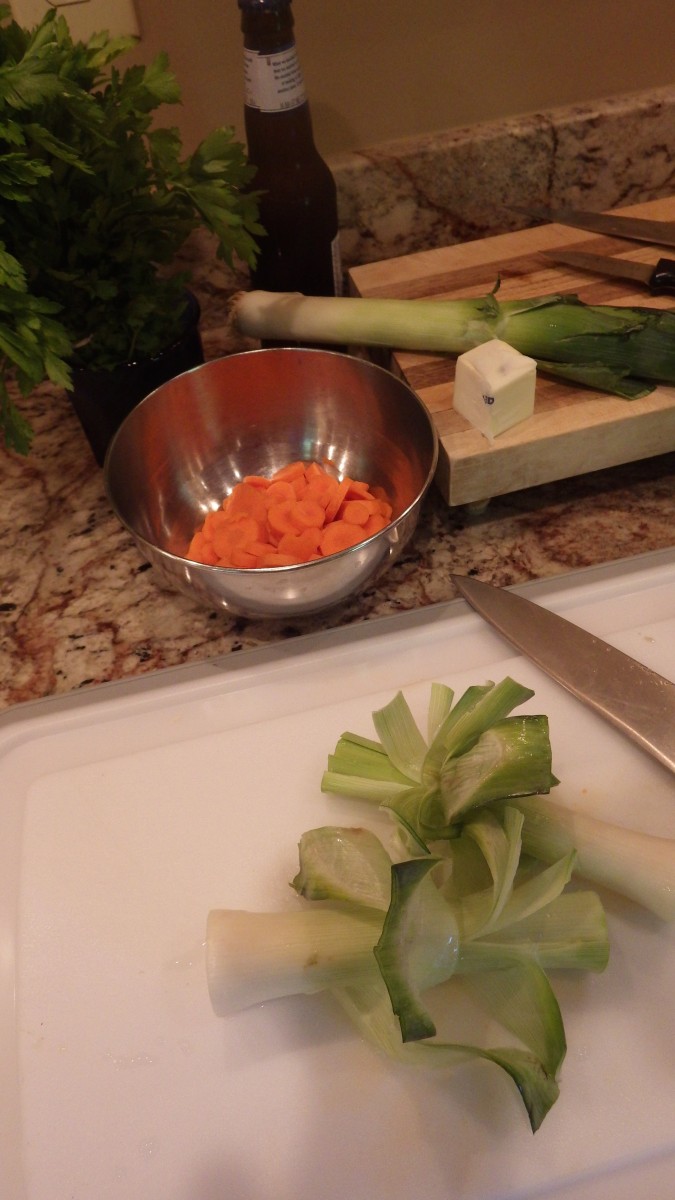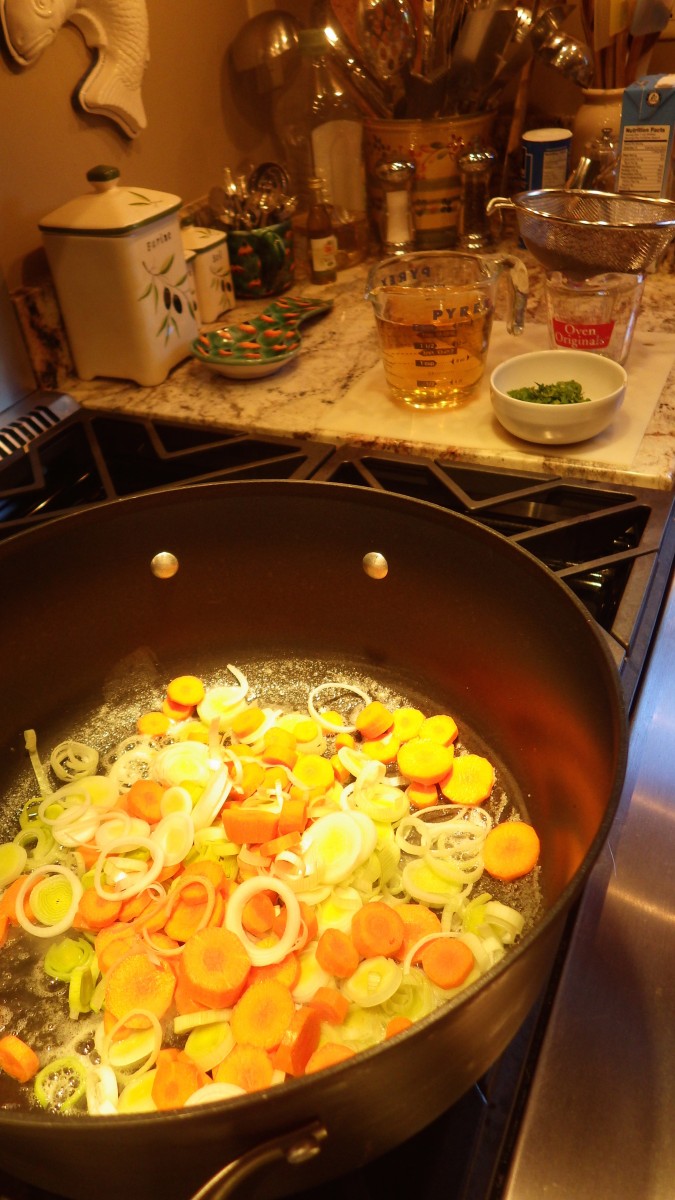And I’m not talking about an overly brined turkey leg you’d be tempted to club someone with at a renaissance fair.
My husband remarked, “It smells very medieval-ish in the kitchen.”
My friend Octavia of the Bunny Sandwiches is a writer of historical fiction, namely The Circle of Ceridwen Saga, a well-researched series of books about Ceridwen, a young woman of the 9th Century who finds herself in the middle of a war-torn Anglo-Saxon kingdom in battle with the invading Vikings. This in an interesting historical period, for if not for KingÆlfred, England would not have a navy and we’d all be speaking Danish.
As an accompaniment to this saga Octavia is producing a small cookbook with recipes for the dishes she refers to in these novels, all the recipes, once again, well-researched. She asked that I vet these dishes for her being the foodie, cook, caterer that I am. I was happy to. There were only ten recipes in her book(let), which I could have tackled easily over a two week period. But, as some of you are aware, I don’t do easy. So instead I invited friends over for a 9th Century Feast, giving me the opportunity to not only review each recipe for ease of use, ingredient availability, clear instruction, proper cooking times, etc., but to make all 10 at once, and get some feedback from a varied audience as to their yum quotient.
What people ate in 871 AD, and their requirements for nutrition and caloric intake were vastly different than today. And most ate for sustenance, not enjoyment. This feast was a groaning board that only royalty or the very wealthy could afford.
My friend Jinx was one of my guinea pigs. Jinx teaches history at Bristol Community College, and not just Western Civ, but also a course called Food in History; a required course for culinary students at the college. When I told her I was throwing an historical dinner she asked what period. When she learned it was 9th Century her response was, “Whoa, tough time for food.”
Above: A Good Looking Bunch of Guinea Pigs
And it was. Travel was dangerous. Staples we take for granted today weren’t available to those in Angle-Land, as it was known then. Tomatoes? Garlic? Potatoes? Rice? No-sir-ee-bub. Sugar? Not until after the Crusades, where it was brought back from what is now the Persian Gulf area and some Mediterranean islands, Cape Verde and the Canaries. Spices? If you were very rich. Nutmeg and cinnamon were saved for your daughter’s dowry, as one of my guests said, “Especially if she was ugly.” So the challenges of this feast were certainly limited ingredients and cooking methods. Luckily I was able to use my electric mixer and gas range instead of building a fire in the back yard and finding a birch twig to use as a whisk. Baking powder wasn’t developed until 1843, so breads and cakes were leavened with “ash water”. Octavia describes this process in her booklet; I urge you to go to her site for a copy once published, as the recipes are worth having in your kitchen and the commentary is delightful.
My prep and cooking were done over a two-day period. My husband remarked, “It smells very medieval-ish in the kitchen.”
For the full rundown click A Ninth Century Feast Menu. I will be sharing the prep and reactions to the dishes on subsequent days, so stay tuned.
The dishes du jour of our sojourn into the 9th Century? Mock Venison Pie with Juniper Berries and Fish Stew with Leeks and Lentils.
I was fresh out of venison but the pie recipe allows for substitutions, so I made this dish with a combination of grass-fed beef and pork. Chopped raisins added sweetness and some chew, and the addition of three, count ‘em, three juniper berries crushed in a mortar and pestle was enough of an aromatic for the 8” pie. Perhaps I’ll make gin with the rest. And Octavia’s recipe didn’t call for an egg wash (which probably would have been considered a waste of an egg back then), but, well, I just couldn’t help myself.
Our panel loved this pie and would have been satisfied with it and the fish stew as their entire dinner.
Click on image to view full size
The stew was a surprise, as it is very close to a fish chowder but with the addition of lentils and nutmeg. The tasters raved about it, loving the consistency that the chew of the lentils added to an old favorite dish. It calls for red or yellow lentils, which I mistakenly thought I had in my pantry. So the lentils in my pot were French green ones, still pretty and very tasty.
Click on image to view full size
Next up, Baked Apples in Pastry Crust, or how I would have been fired as a pastry chef in 871 AD.
Get the complete Cookery Book(let) here at octavia.net






















Leave A Comment